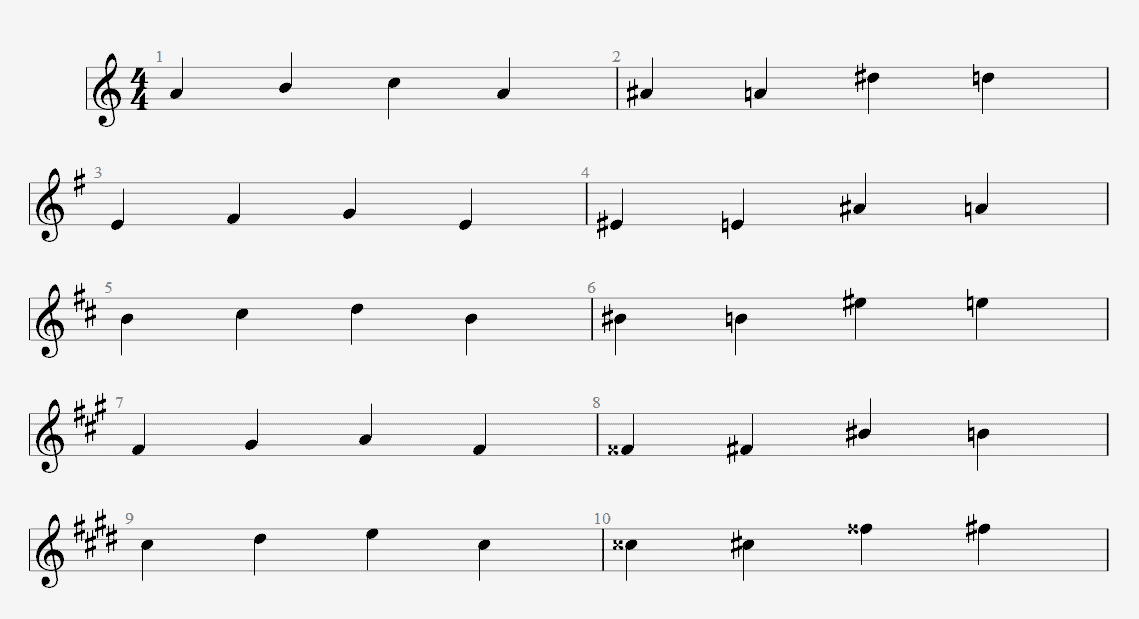Although the phrase “transposition” may seem arcane in music theory, it is a fundamental ability that every musician should be familiar with and know how to transpose a song in music.
In truth, samples and cover songs are just two musical contexts where the idea of transposition is present.
But if you’re just starting started, transposing a tune or melody can be tricky.
We’ll explain the meaning of the phrase in detail and demonstrate the simplest methods for transposing any musical fragment in this article.
Let’s start now.
What does music transposition mean?
Transposition is the term people use to describe raising or lowering a set of notes by a fixed musical interval.
An equivalent sound results from transposing a chord or melody since the relationship between each interval doesn’t change.
A melodic or harmonic sample may need to be transposed to fit into an arrangement. Transposing songs also frequently occurs so that the musicians can play or sing in a key that is more comfortable for them.
You can transpose a phrase by playing the notes on your instrument in the new key, or you can use a sample transposition tool, such the warp feature in Ableton Live.
Transposition is the process of uniformly shifting a set of notes from one pitch to another.
In both situations, in order to get the desired outcome, you must be aware of the semitone difference between your objective and the original phrase.
How to change a chord or melody?
There are two basic ways to translate musical material, although they both share a similar fundamental idea. To achieve the desired result, the pitches in your original phrase must change pitch by the same amount, either up or down.
Here are two methods for transposing musical material so that it will work in your arrangement.
Transpose a Song in Music by key signature
Musicians who are familiar with their key signatures prefer this form of transposition.
Here are the two stages it takes:
1. Determine the key of your source material
If you already know the key of the original notes, this step is simple. For this reason, if you wish to change the key of a song, I suggest using this technique.
To position oneself on your instrument, it’s crucial to understand the key of the song. You will begin using this strategy with that knowledge.
There are a few practical ways to find the original key if you don’t already know it.
However, the first and closing chords of a song provide a useful hint. Songs usually begin and conclude in tonic harmony, barring a key change or a false cadence.
Thus, the key’s letter name and the chord’s root are corresponding.
The key signature is then all that is left to be remembered, or you can use the circle of fifths to locate it.
2. Insert the components in the new key
Knowing a song’s key also means understanding the harmonic function of each chord using scale degrees.
You may find them by simply counting the number of scale steps from the tonic to the root of each new chord.
You’ll eventually grow accustomed to noticing the chords that are most frequently employed in standard chord progressions.
It’s the reason Roman numerals are frequently used in place of chord names when writing harmonic progressions. You can therefore play them in any key you choose!
Here, the same idea is relevant. The scale degree and harmonic function of each note and chord remain unchanged from the original key.
If you are familiar with diatonic chords, you may be able to identify significant chords like I, IV, and V in the new key.
Players of harmonic instruments, such as the guitar and piano, most frequently utilize this technique to quickly transpose tunes.
If you perform in a band or ensemble, it’s a fantastic ability to have.
Transpose a Song in Music by intervals
If you need to transpose a melody, fragment, or specific chord—especially in a sample—this method is more useful.

